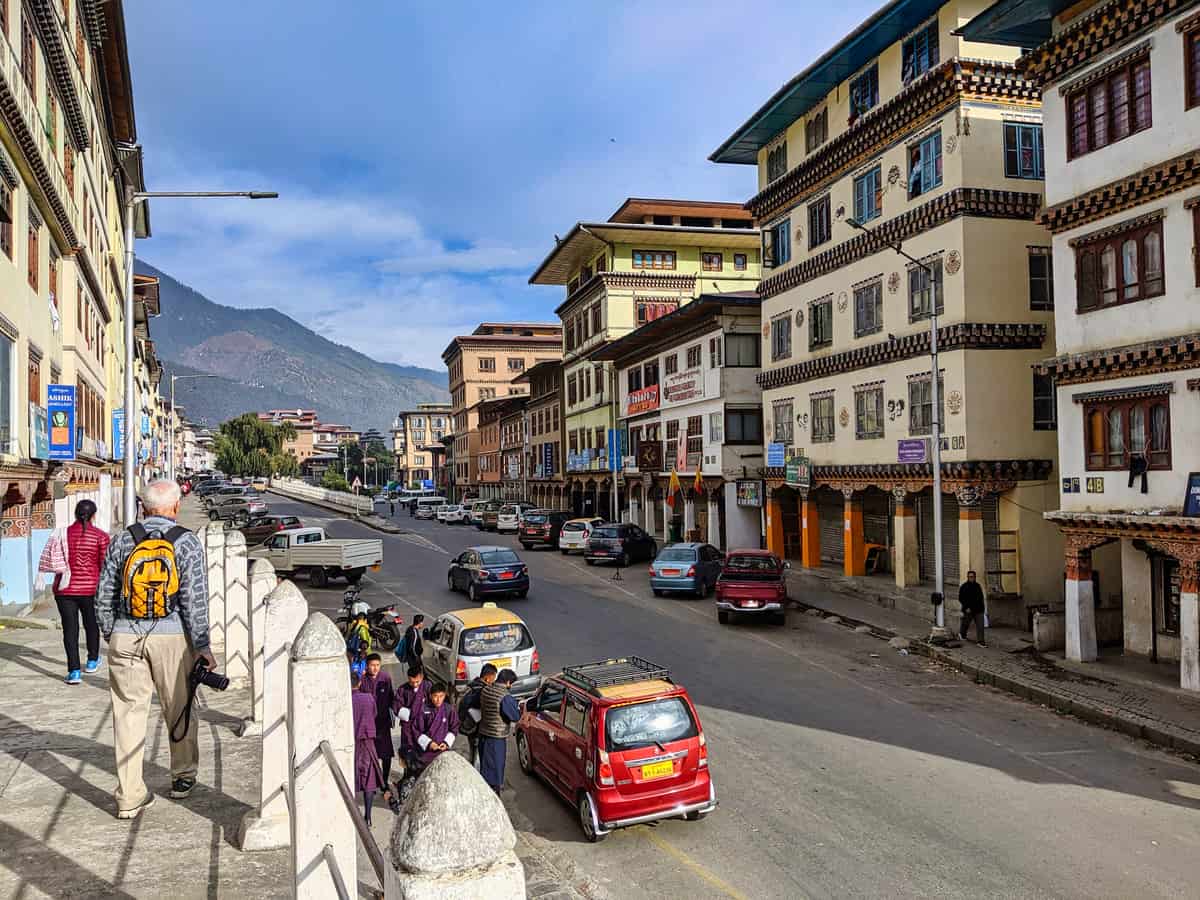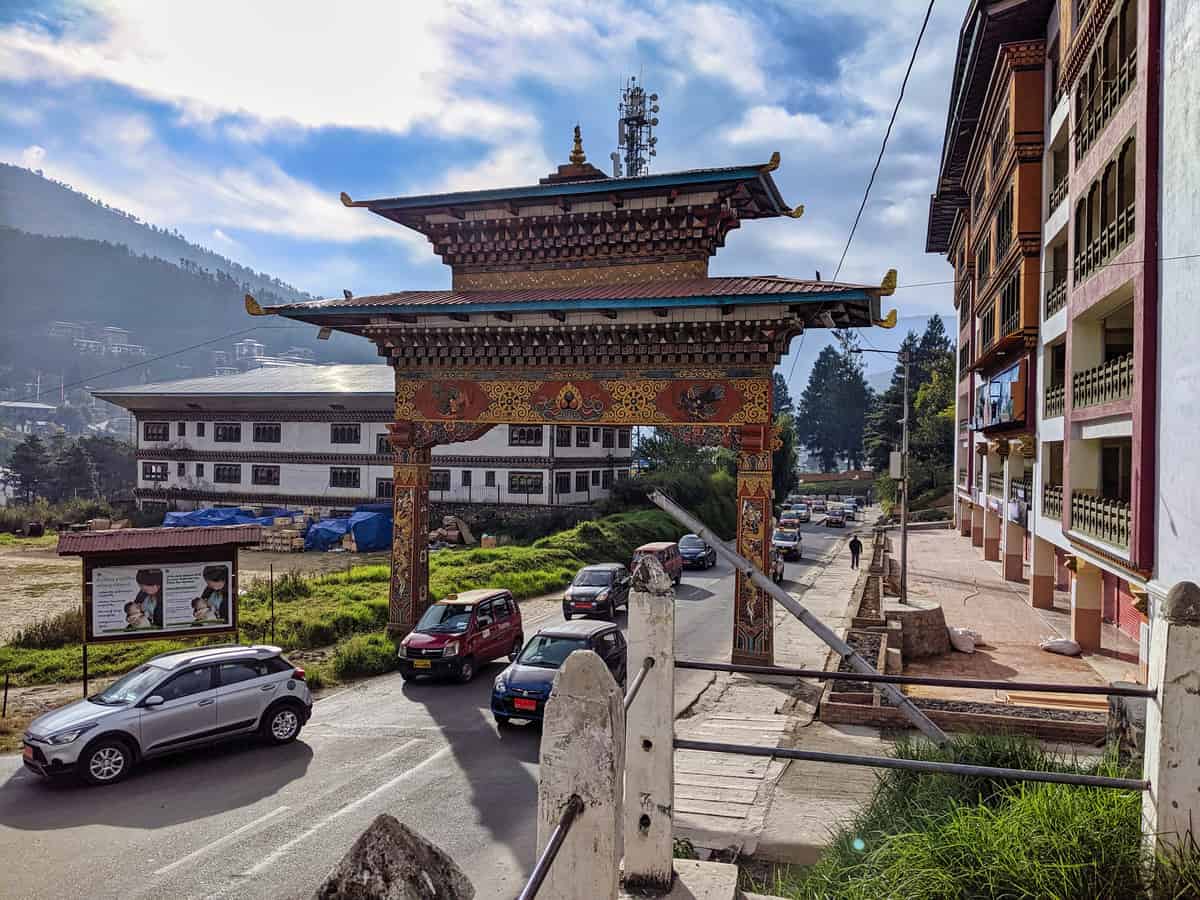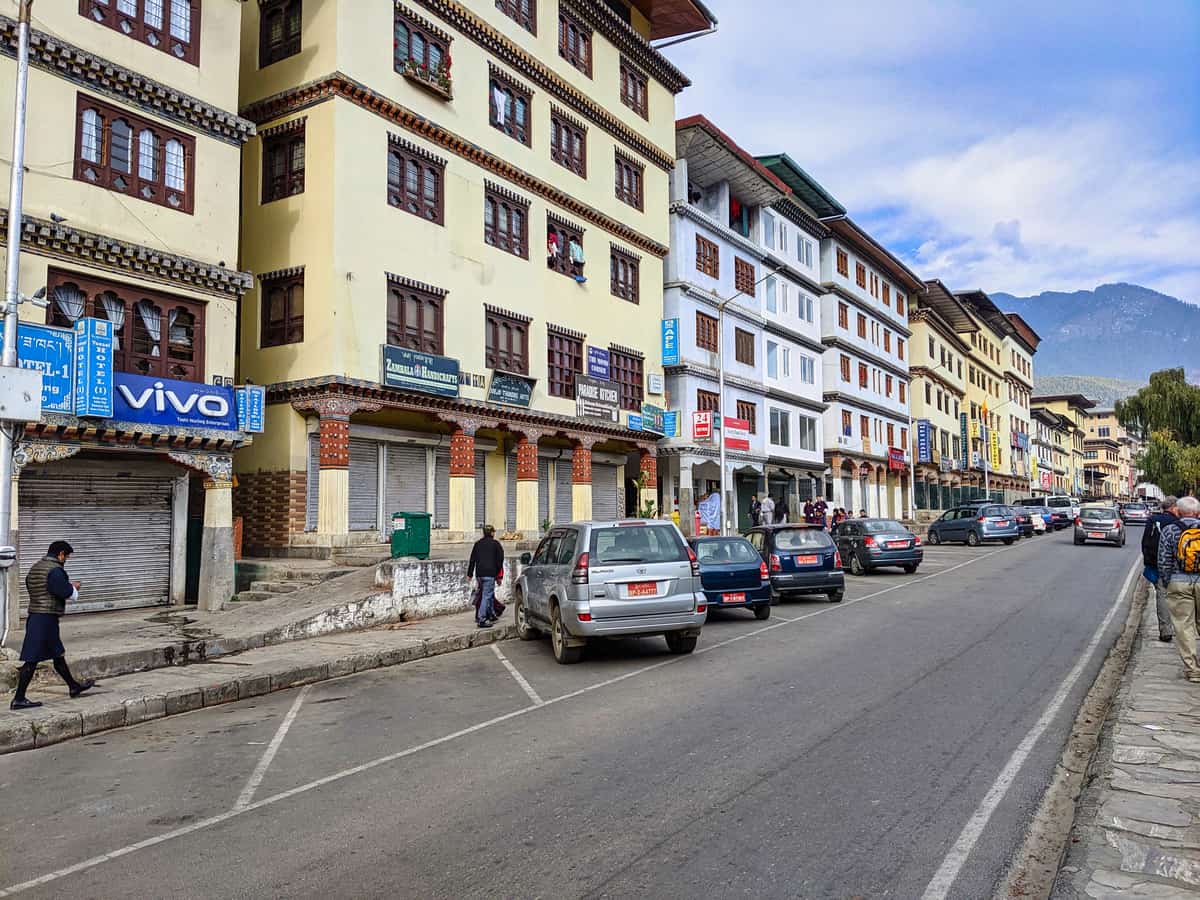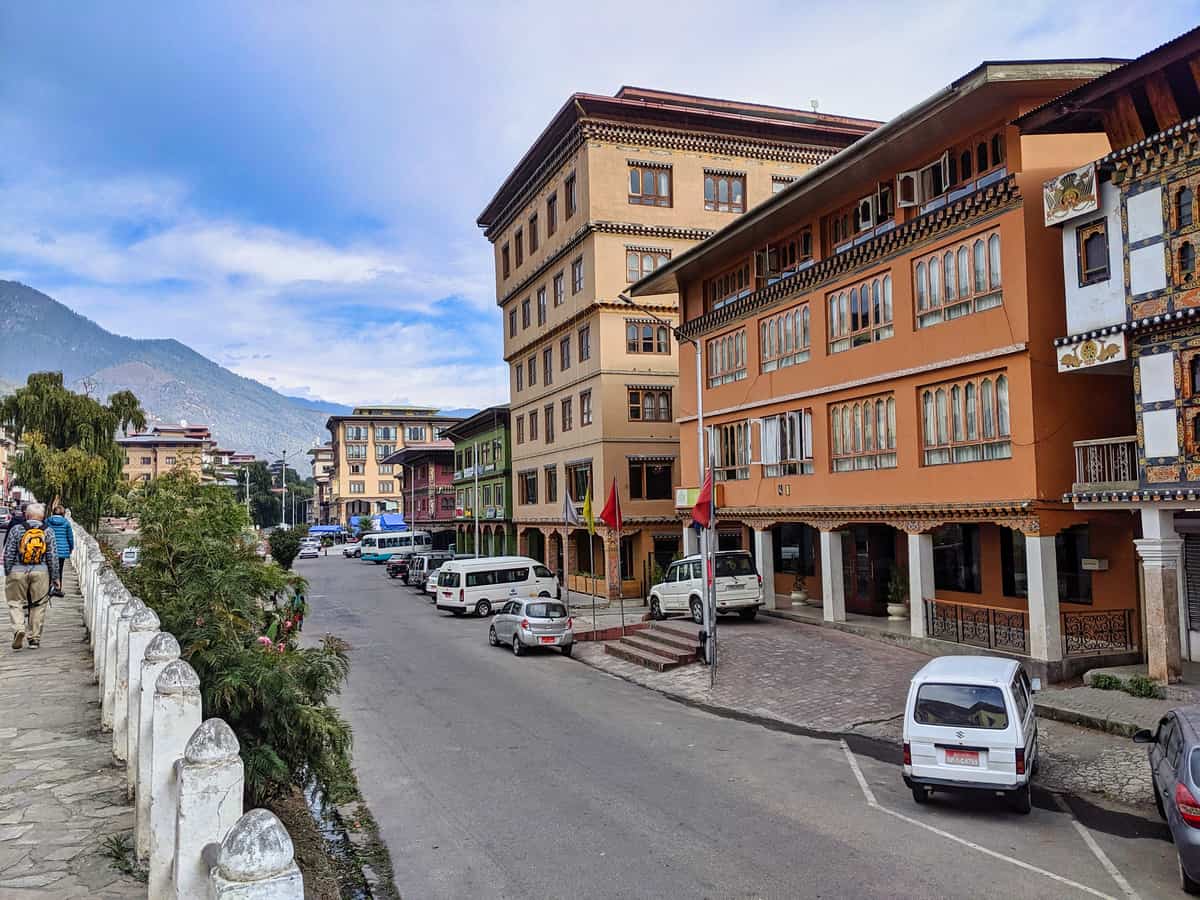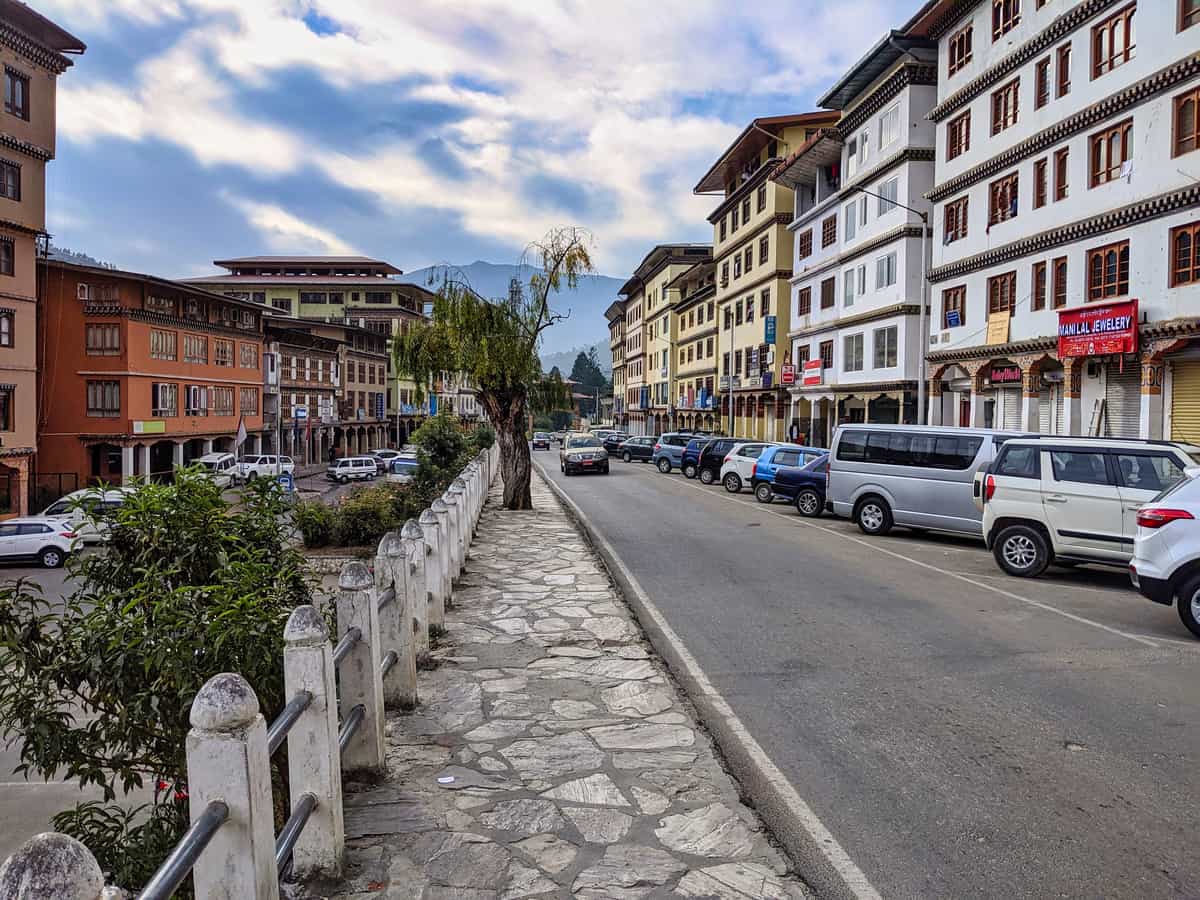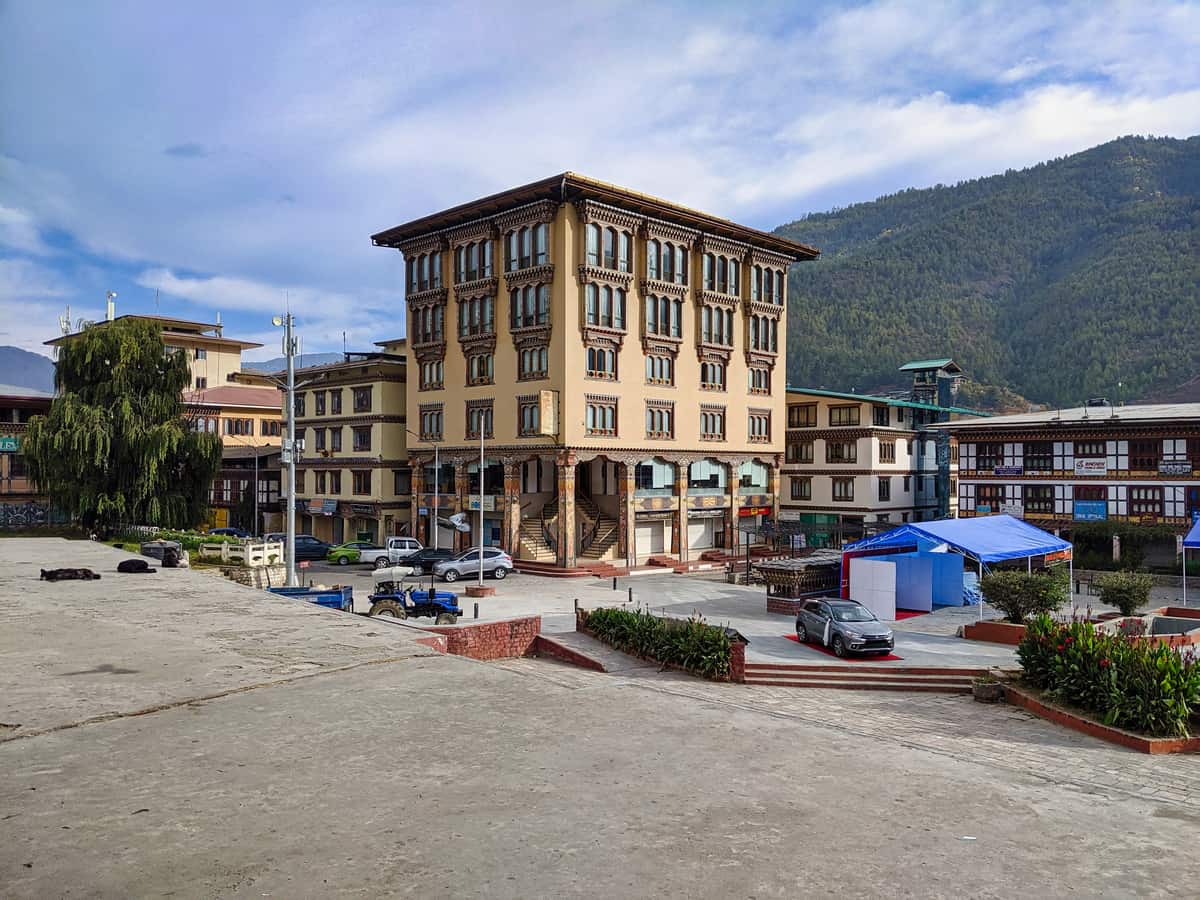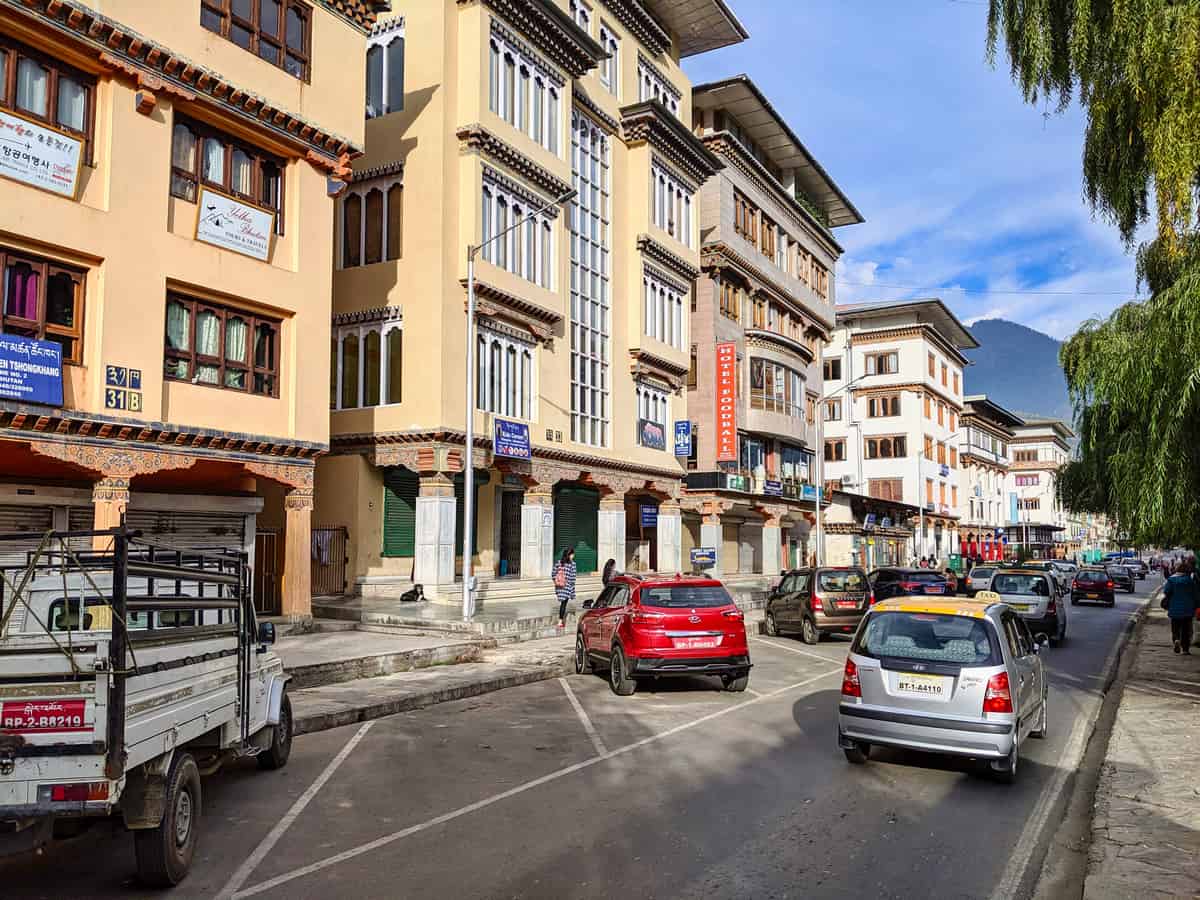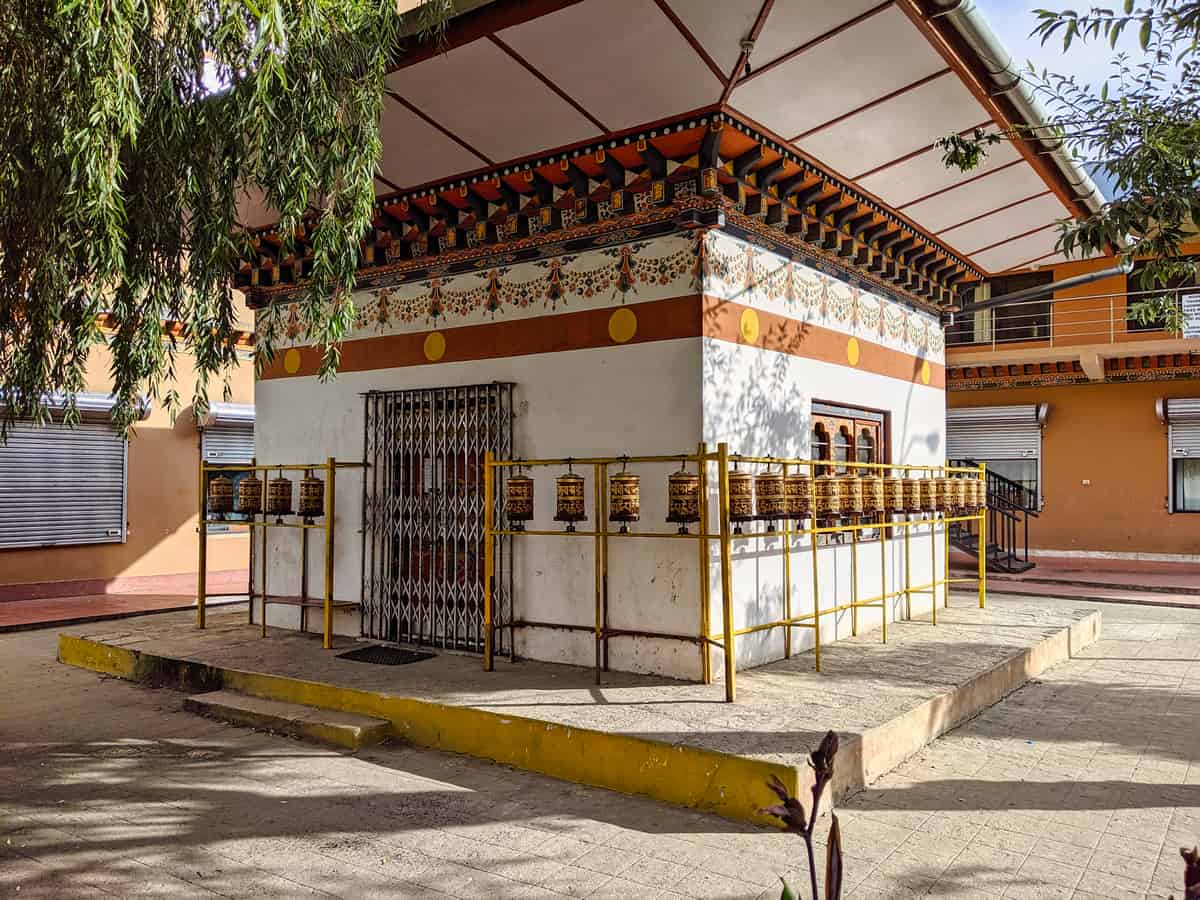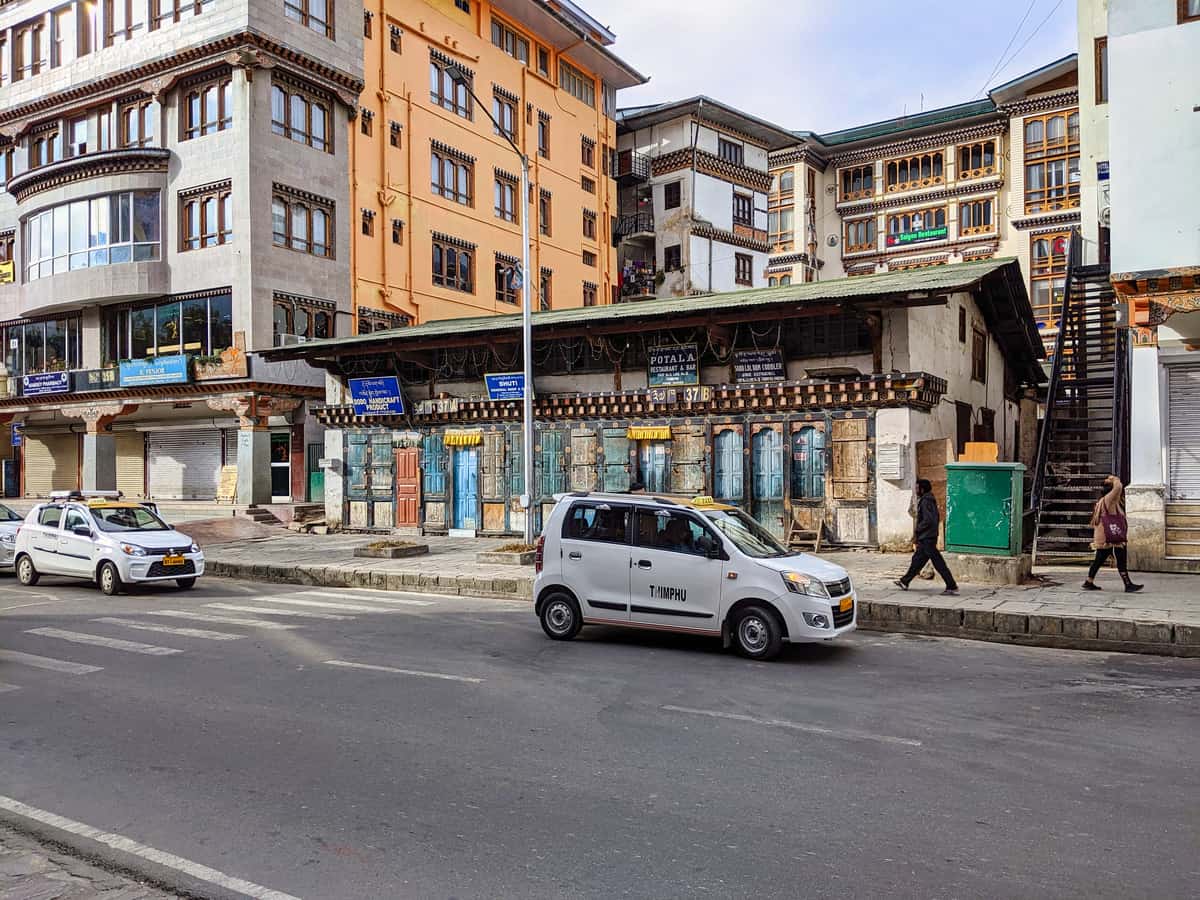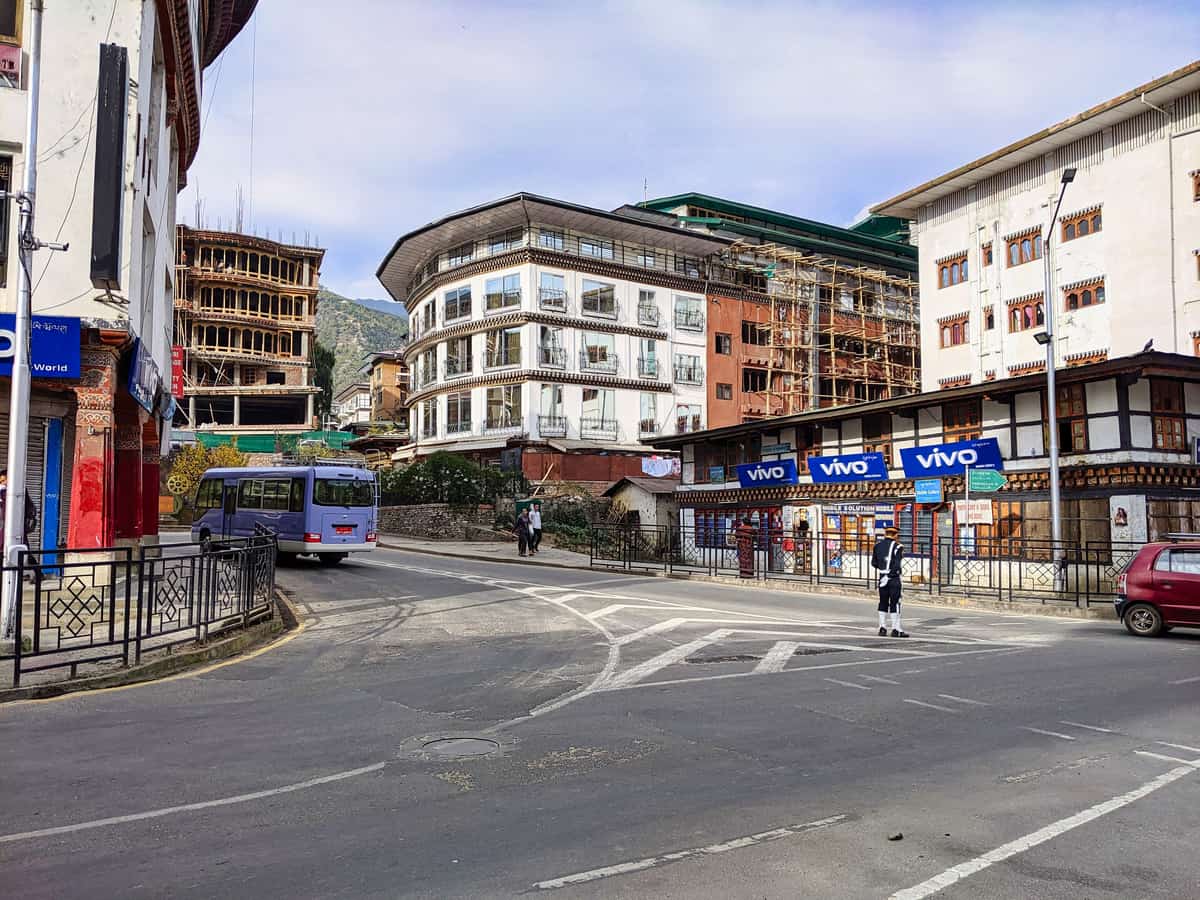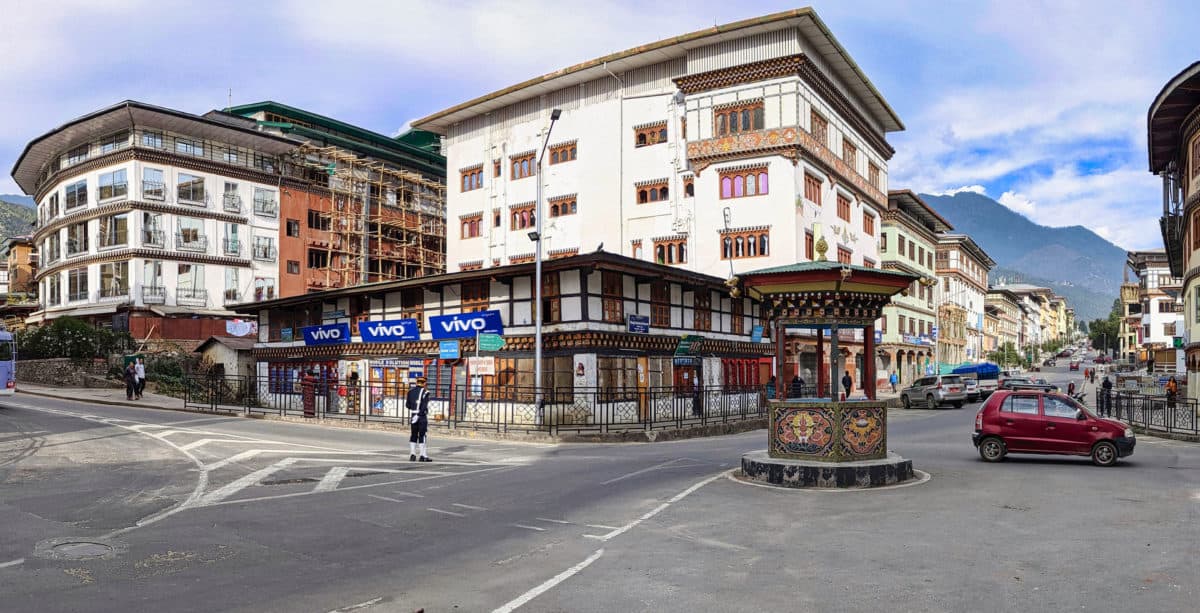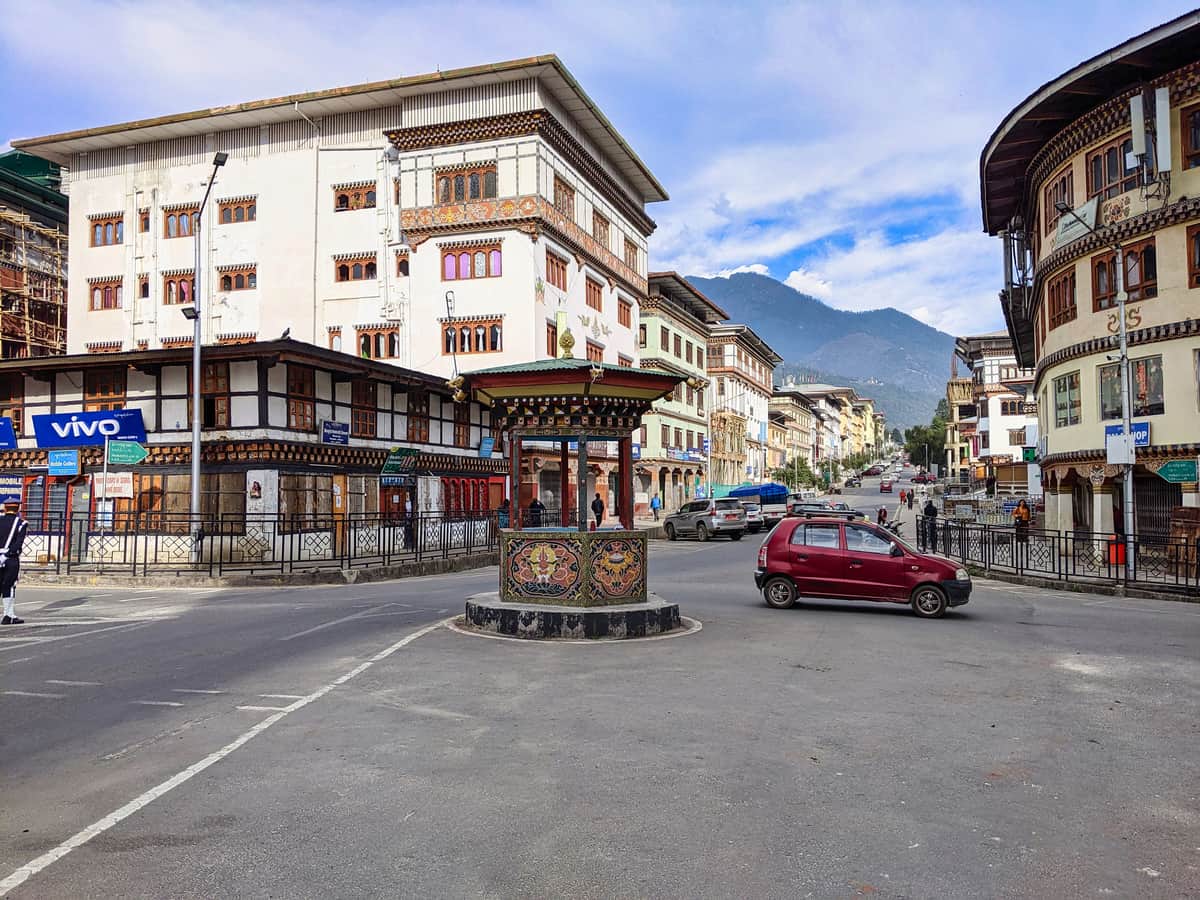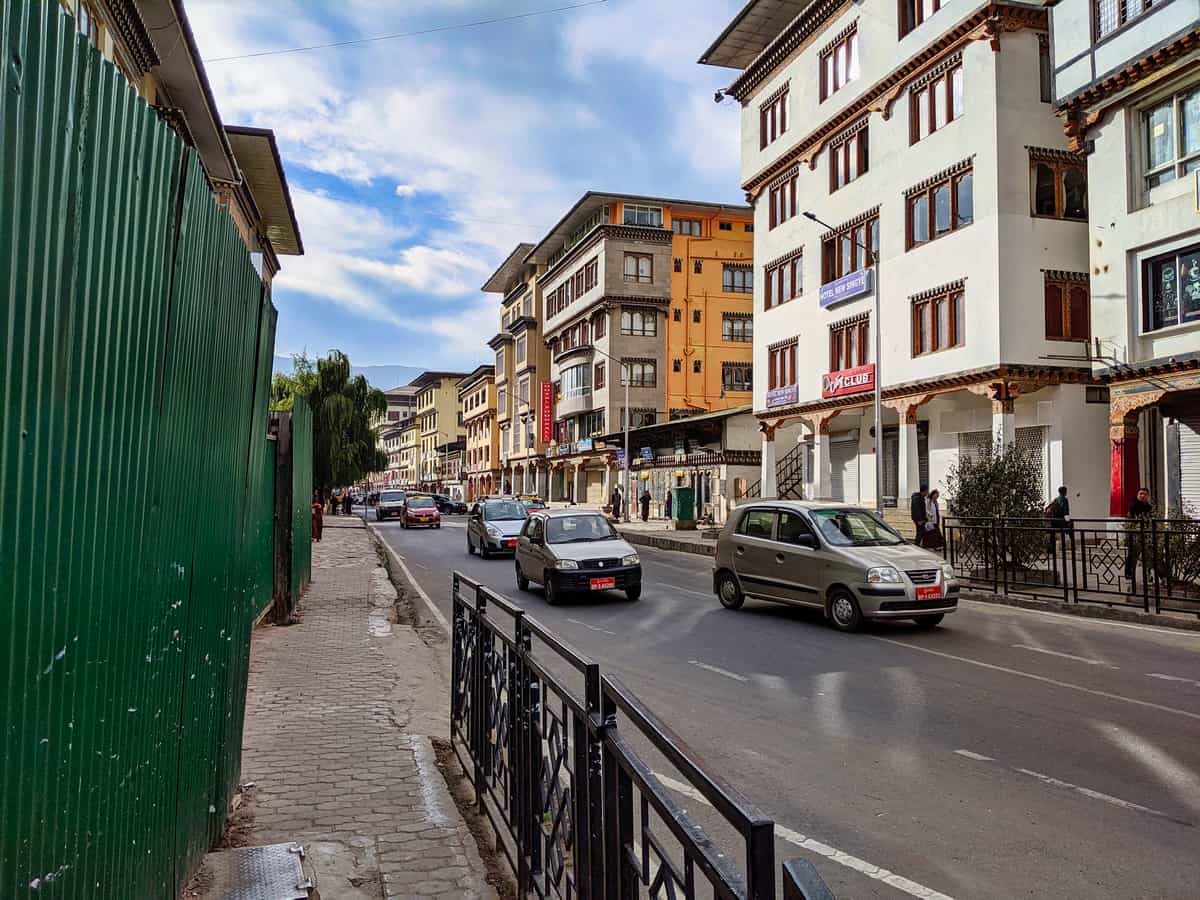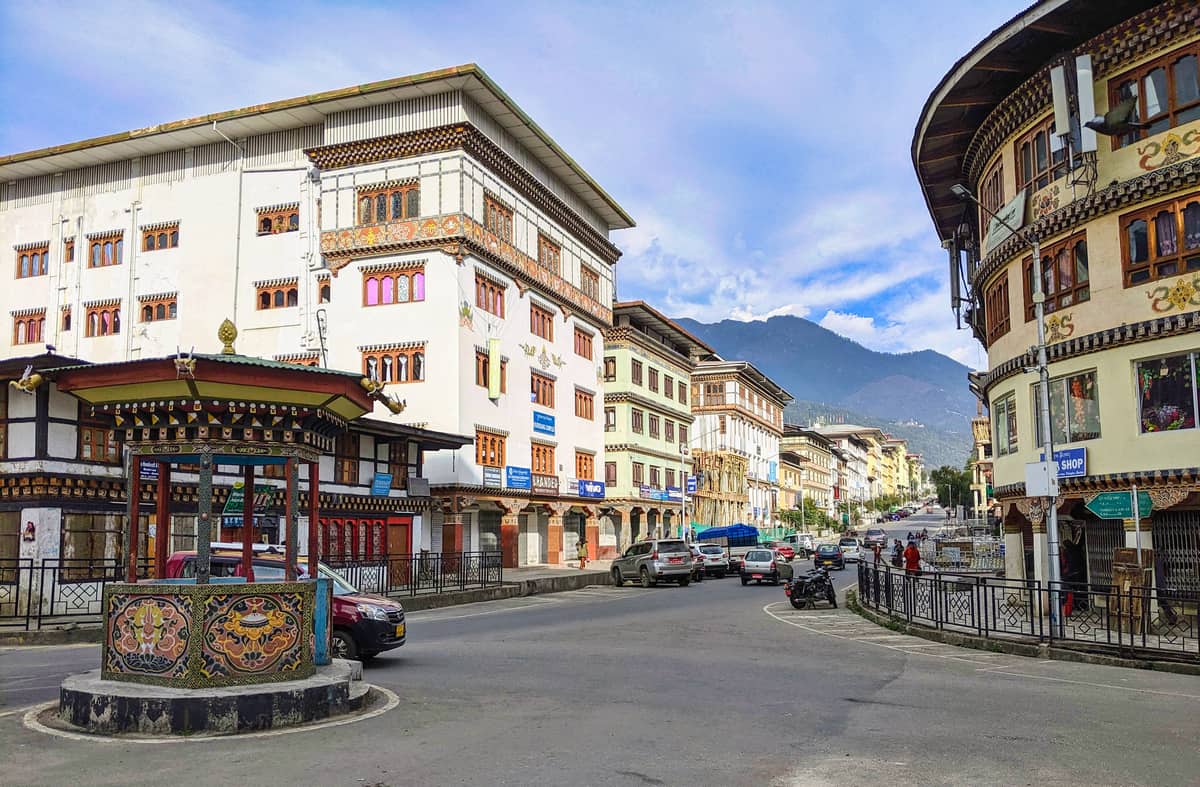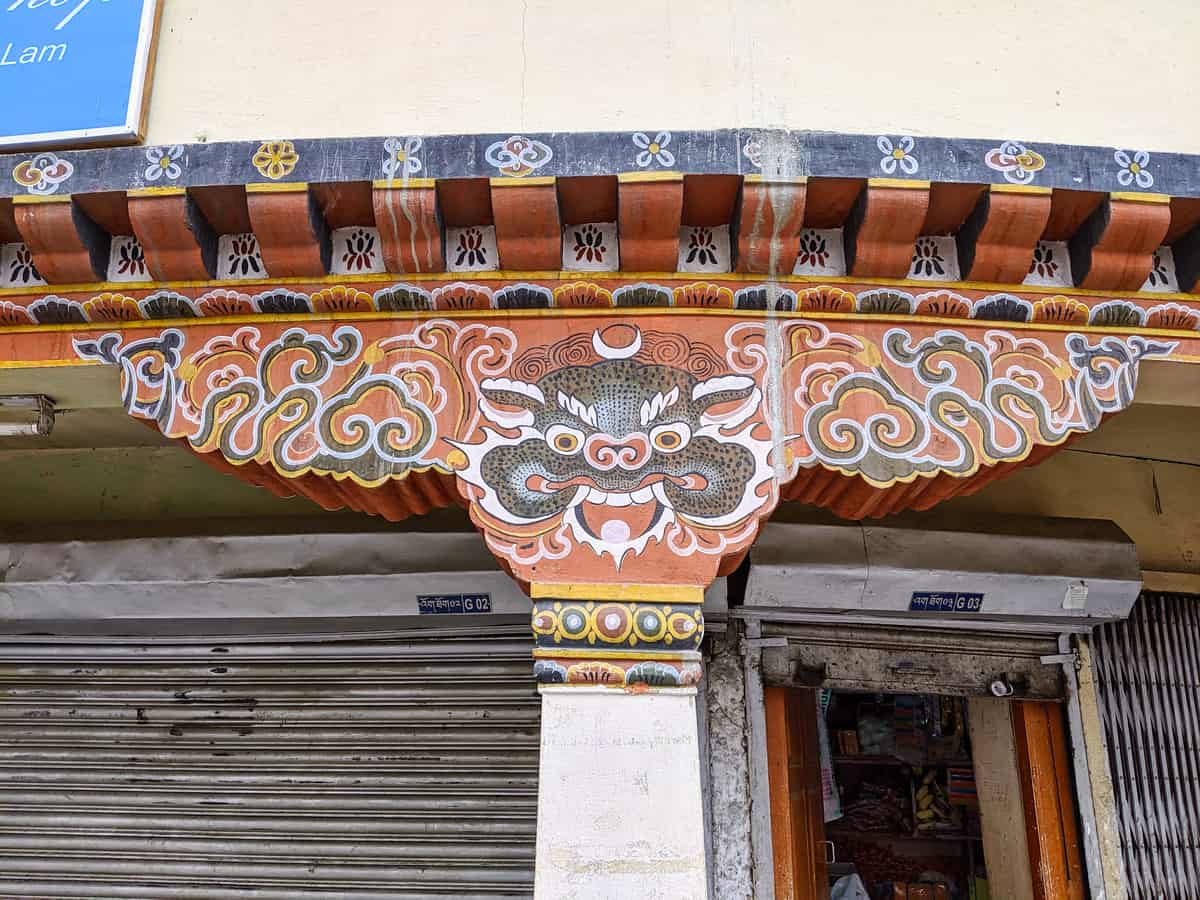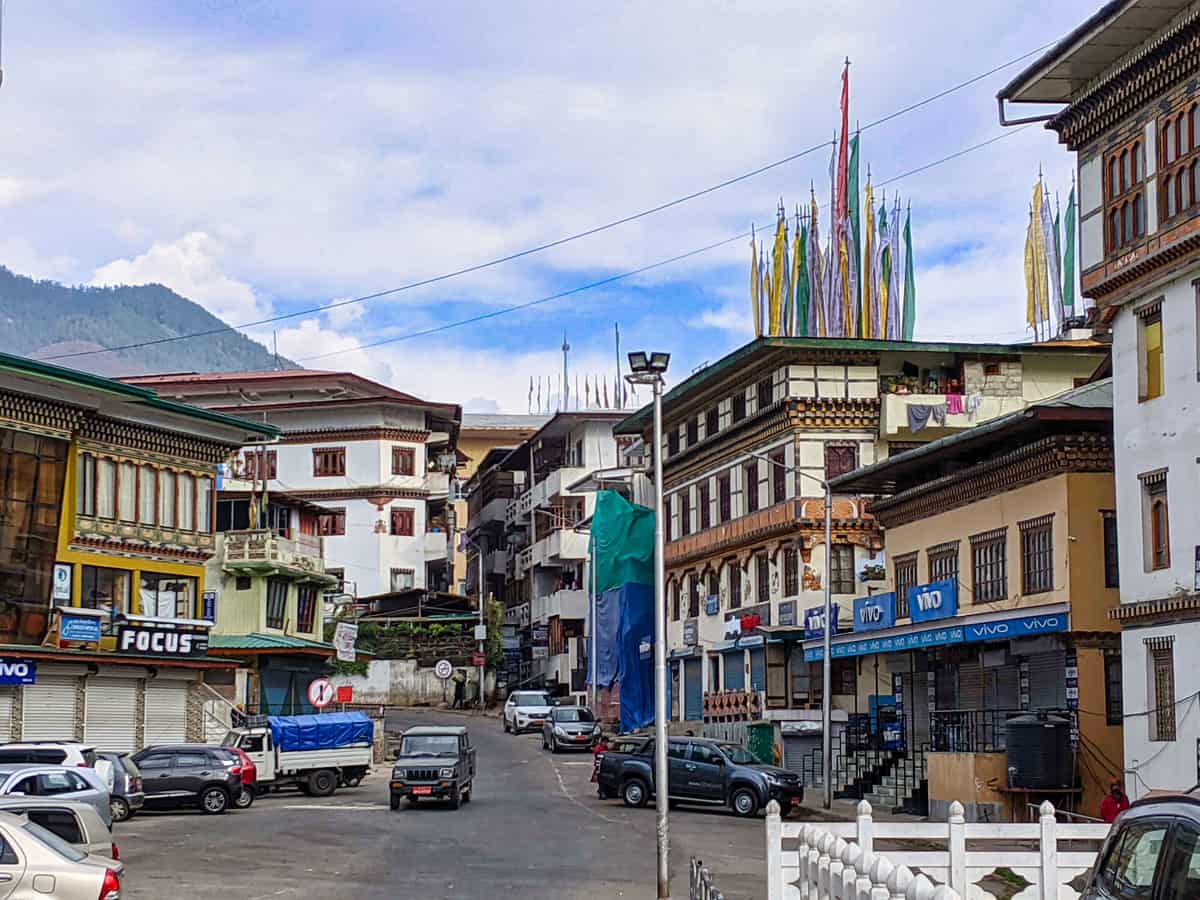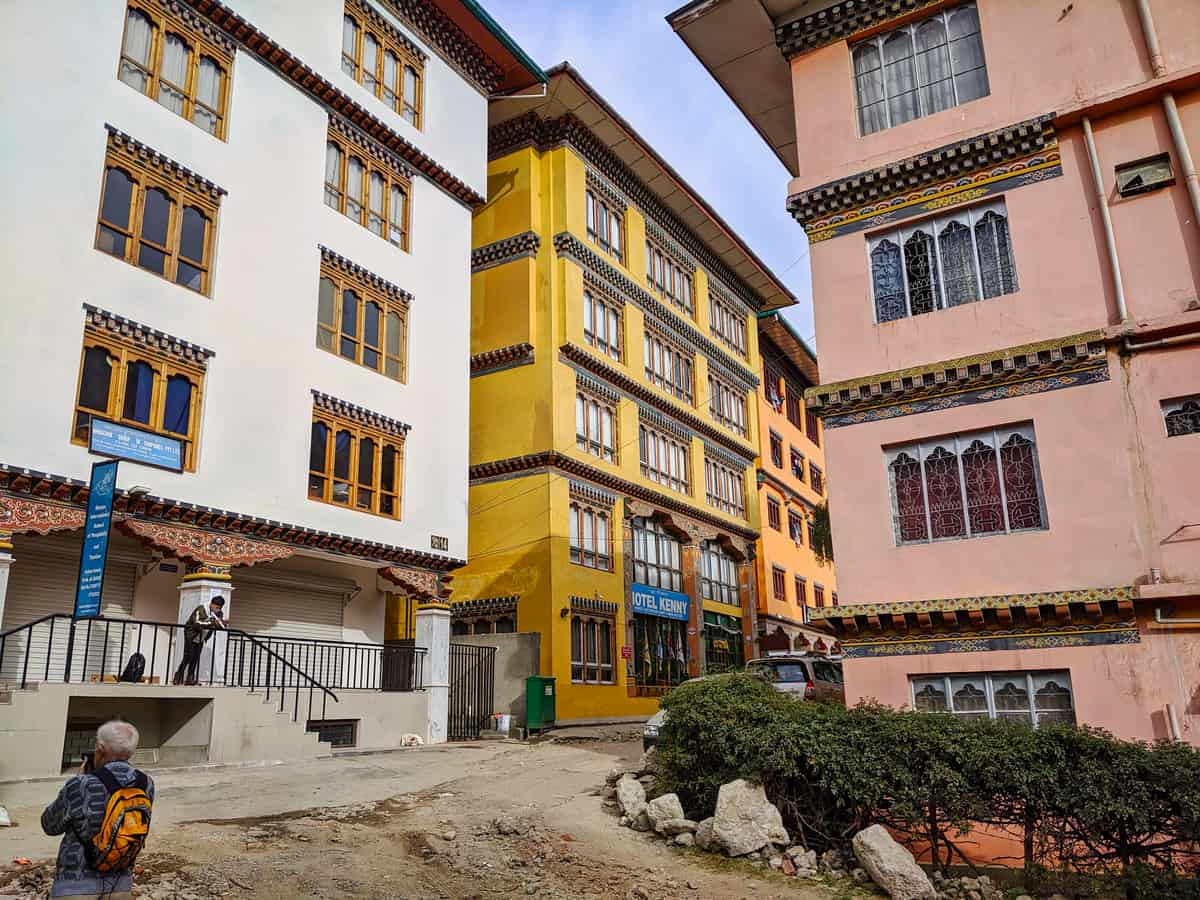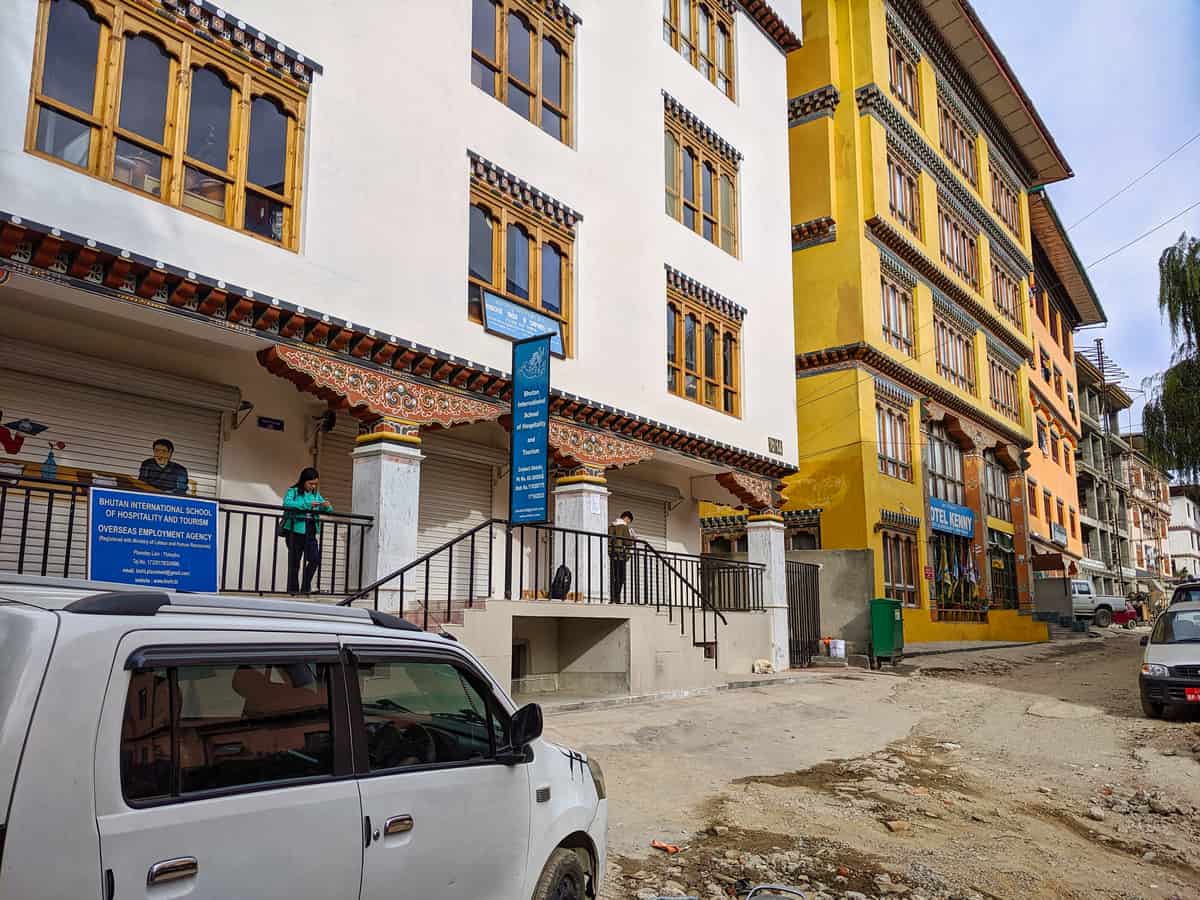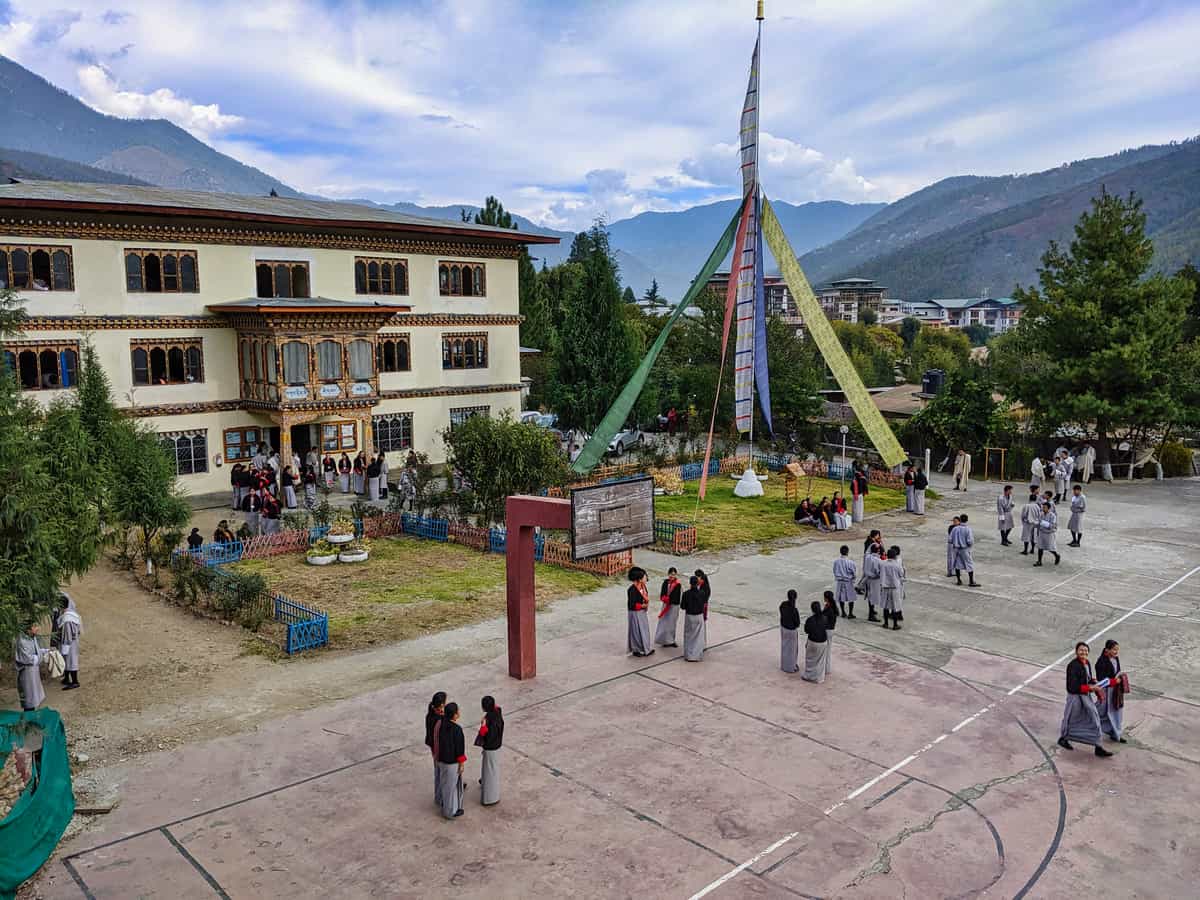Embrace Bhutan Cultural Tour
Thimphu | Bhutan
08 Nov 2019 | Fri
Day 02 of 13
Exploring Capital City Thimphu Bhutan
Early Morning Thimphu Walkabout
Waking up early and taking a look from our balcony (on our first full day in Bhutan) I noticed that our two group guides (Steve & Roger) were out front of the hotel getting ready to do a quick walk (to take pictures) around the city of Thimphu, so I quickly went down to join them. It was very early and we could get it in before our group met for breakfast (in the hotel).
Traditional Bhutanese Architecture
Below are some of the pictures I took on this early morning walkabout around Thimphu. It is a beautiful town that has a mix of mostly old Bhutanese-styled architecture. But it is modernizing quickly with rapid growth taking place. I thoroughly enjoyed walking around and exploring the city.
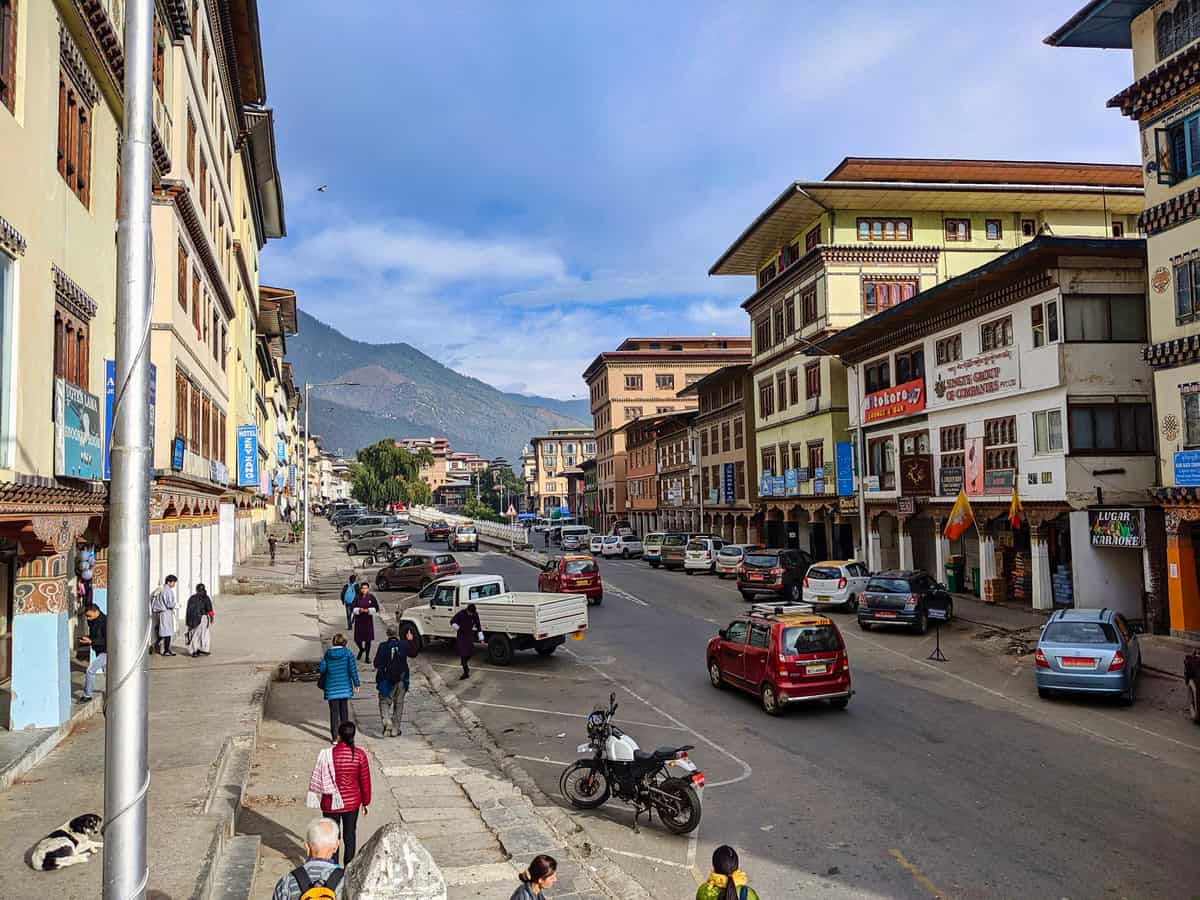
Directing Traffic the Old Fashion Way
One of the neat things we were able to see was the famous Thimphu Traffic Circle where a single traffic policeman still directs traffic the old fashion way – with hand signals and dance-like moves. It’s reported that Bhutan is the only country in the world where its capital city (Thimphu) still does not use traffic signal lights to direct traffic. The city uses sharped dressed traffic policemen (complete with white gloves) to direct traffic at all of its major intersections.
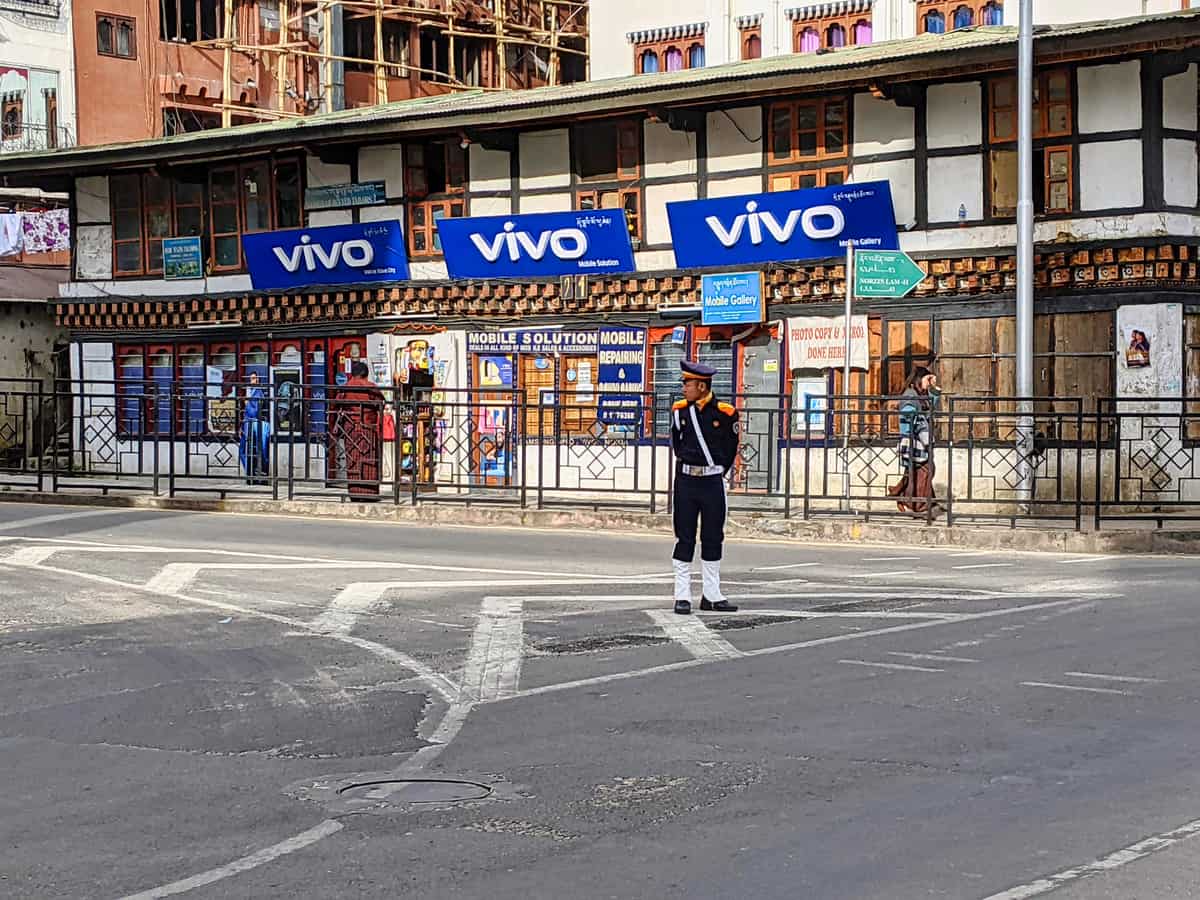
It hasn’t always been like this, a few years ago the city made an attempt to use a traffic signal in the circle but the Thimphu residents quickly pushed back stating they preferred the charm of traffic policemen instead – so they were brought back.
The Traffic Circle at Nordzin Lam 1 is quite interesting and fun to watch because of the Traffic Officer’s animated, dance-like movements. Very interesting and entertaining!
I’ve included a map of this spot at the bottom of this post.
Bhutanese Prayer Wheels
Another interesting sight was capturing a local Bhutanese man turning several prayer wheels (below). As shown in the picture below, each prayer wheel has a prayer mantra printed on it. When a person spins each wheel by hand they are receiving the equivalence of someone orally reciting the same prayers but multiplied by the number of times the mantra is printed on the scroll.
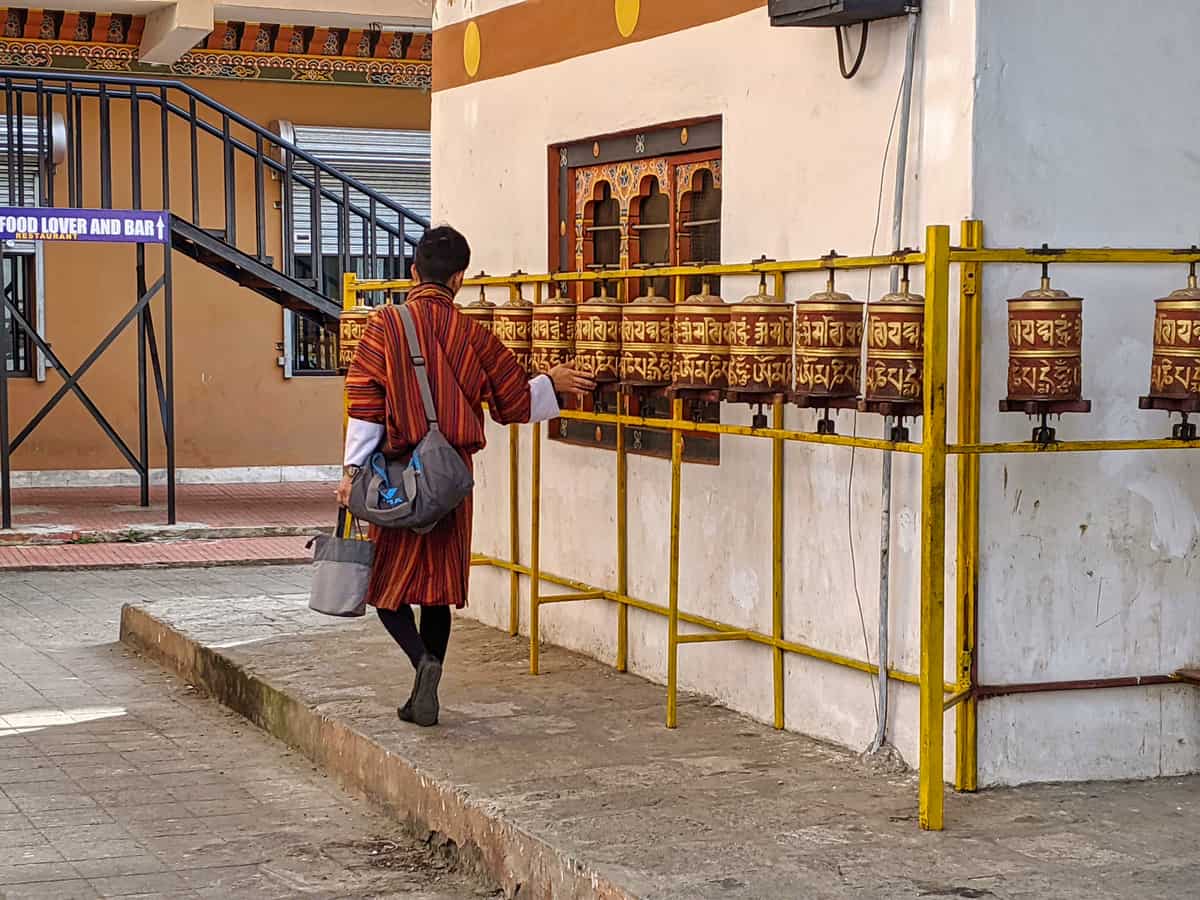
Downtown Bamboo Supported Construction Site
I’ve always heard about bamboo being used in construction projects in different parts of the world (like South America and Asia) and even seen it used with Temple construction projects in Thailand. But I’ve never really seen it done on a large scale (with multiple stories). So it was a treat when we came across a large bamboo-supported construction site in downtown Thimphu.
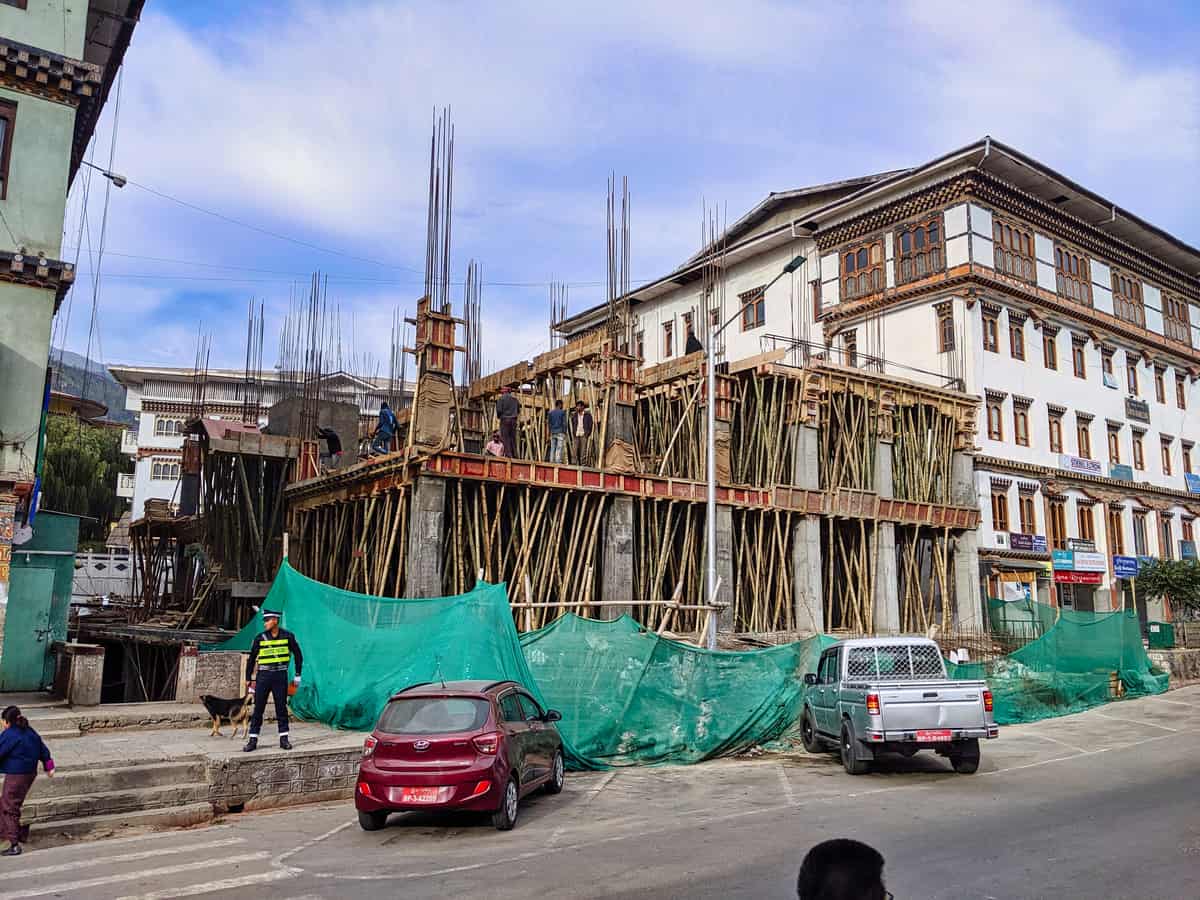
To keep this post from getting too long, I decided to cover this construction site in its own post here… Bamboo Supported Construction Site Thimphu
Traditional Bhutanese Clothing
Many Bhutanese men and women still wear their traditional clothing – Gho (for men) & Kira (for women). It is compulsory (required) for all Bhutanese to wear the national dress in schools, government offices, and on formal occasions. For example, our Bhutanese tour guides must always wear their traditional Gho clothing while in public.
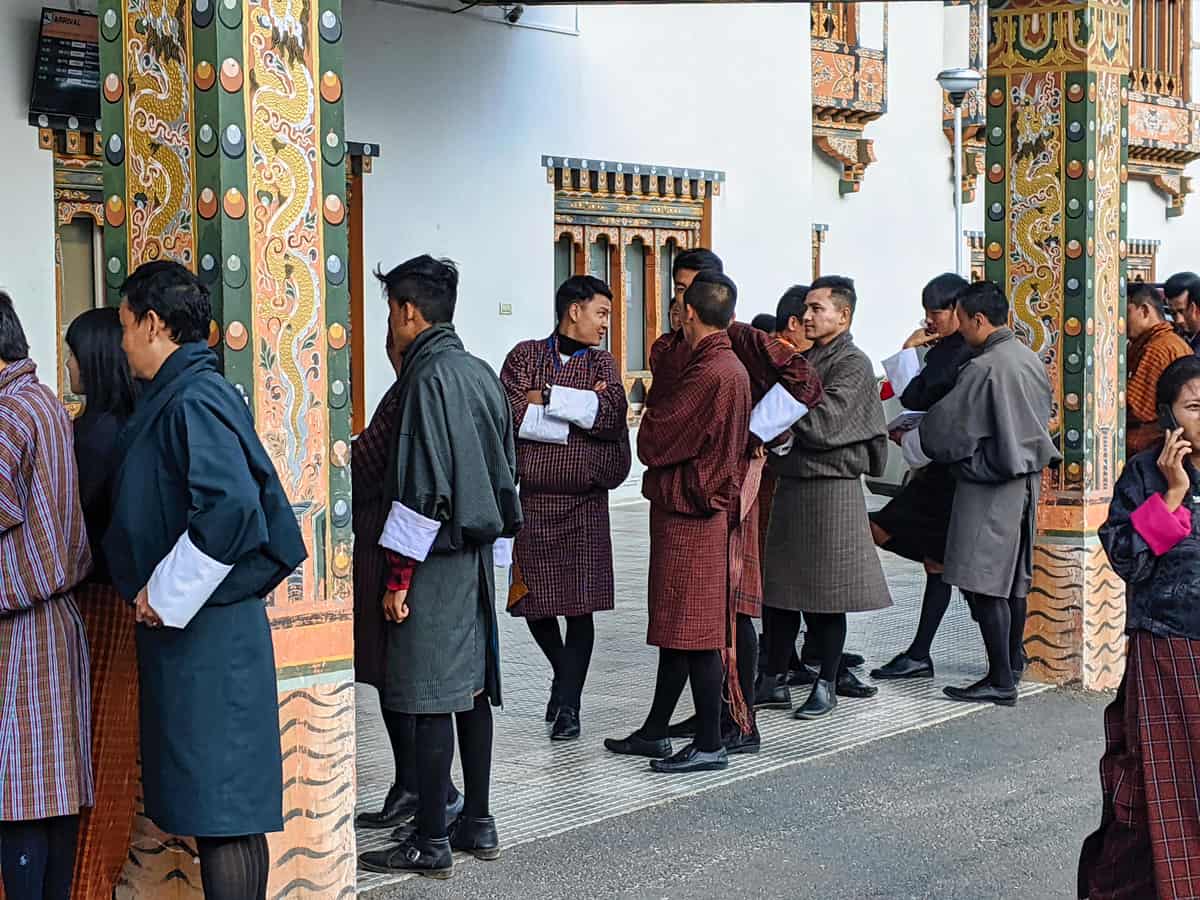
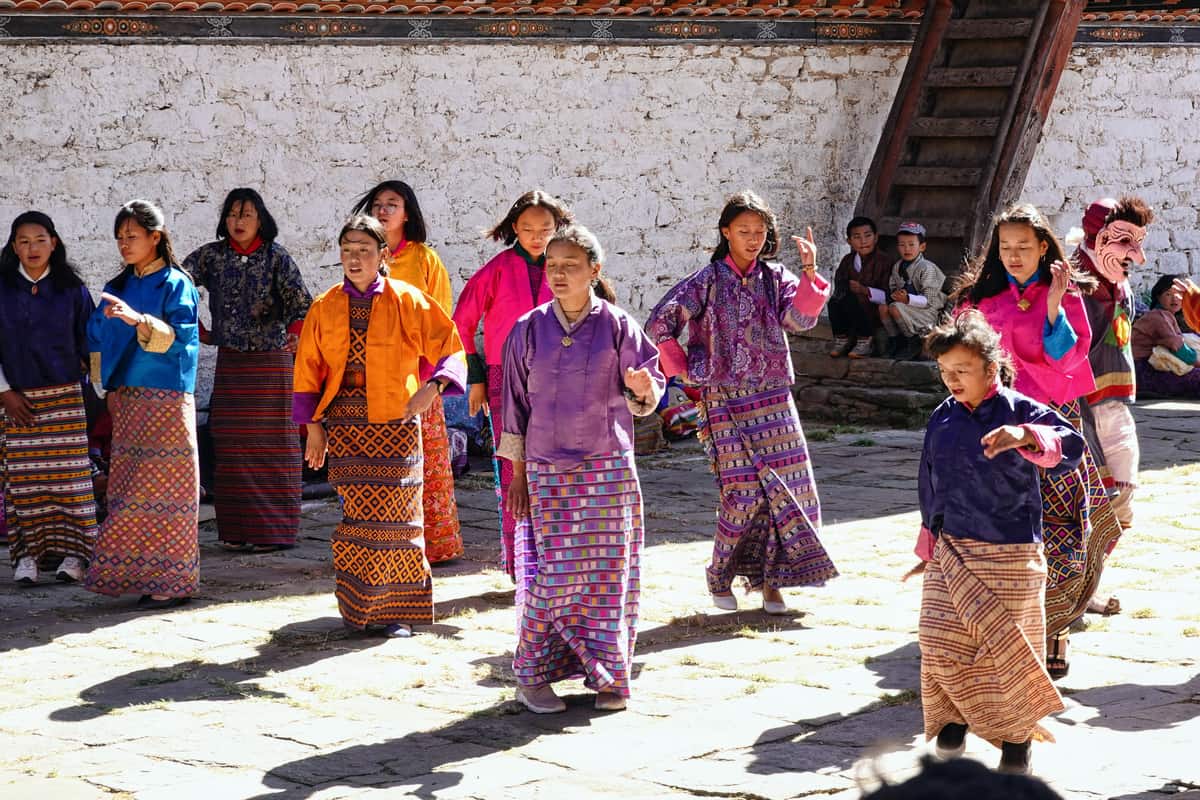
On our return back to the hotel we noticed a Bhutanese primary school close by. Both the girls and boys were wearing their traditional school clothing.
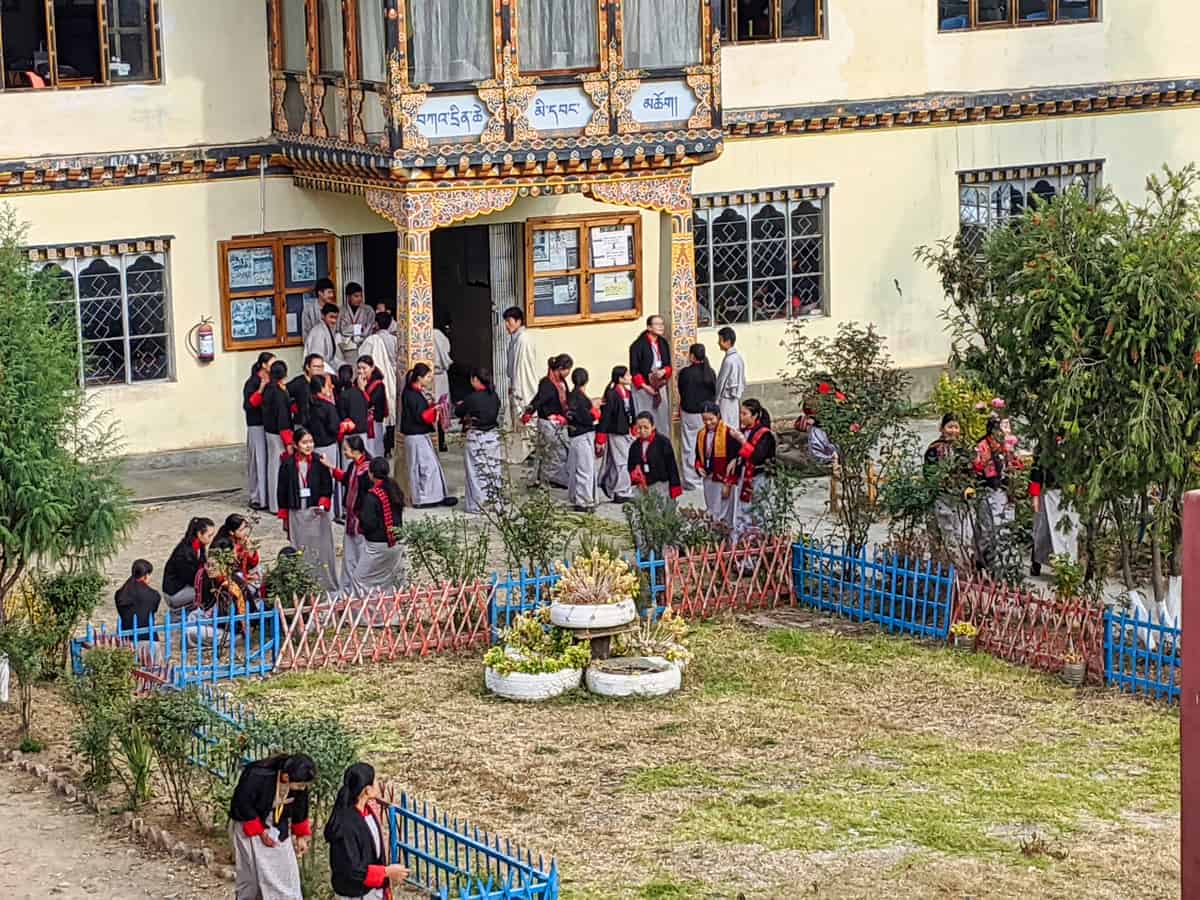
Exploring Capital City Thimphu Bhutan
